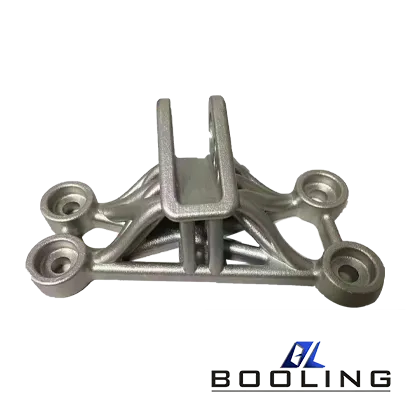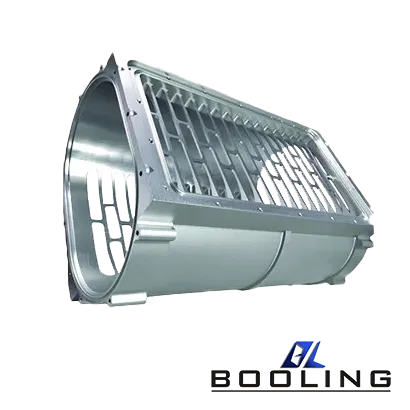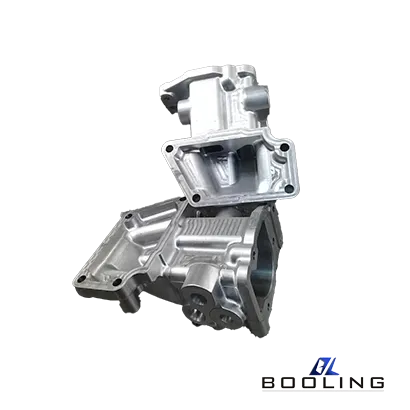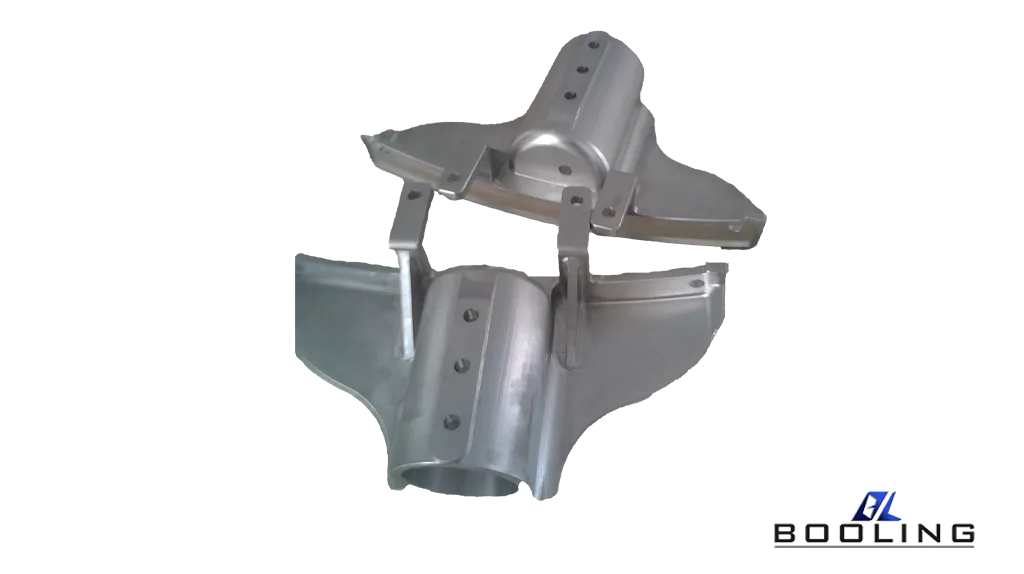Home > 3D Printing Service > Metal 3D printing
Metal 3D Printing
Metal 3D printing, also known as additive manufacturing, is a process that creates metal parts by building them up layer by layer using a variety of techniques.

Metal 3D Printing
- Direct Energy Deposition, DED
- Powder Bed Fusion, PBF
- Binder Jetting, BJ
- Sheet Lamination, SL
- Cold Spray Deposition, CS
Metal 3D Printing Capabilities
Direct metal laser sintering (DMLS) is an industrial metal 3D printing process that builds fully functional metal prototypes and production parts in 7 days
·
US
Metric
Stainless Steel
16.5 in. x 16.5in. x 17.7 in.
420mm x 420mm x 450mm
Titanium Alloy
16.5 in. x 16.5in. x 17.7 in.
420mm x 420mm x 450mm
Aluminum Alloy
16.5 in. x 16.5in. x 17.7 in.
420mm x 420mm x 450mm
Cobalt Chromium Alloy
16.5 in. x 16.5in. x 17.7 in.
420mm x 420mm x 450mm
*Direct metal laser sintering (DMLS) is an industrial metal 3D printing process.
Metal 3D Printing Material
The material choice depends on the required properties like strength, temperature resistance, corrosion resistance, and the application.
Material
- Stainless Steel (316L)
- Titanium (Ti6Al4V)
- Aluminum (AlSi10Mg)
- Cobalt Chrome (Co28Cr6Mo)
- Nickel Based
- Tungsten
- Ti3Al
- Inconel 718
- Nickel Titanium
- Fe-Al
The Advantages of Metal 3D Printing technology
Direct metal laser sintering (DMLS) is an industrial metal 3D printing process that builds fully functional metal prototypes and production parts in 7 days
Advantage:
- High degree of design freedom
- Rapid prototyping
- Support customized products
- High material utilization rate

Application of Metal 3D Printing
Metal 3D printing technology has broad application prospects in various fields such as aerospace, automotive, medical, industrial manufacturing, and jewelry.

Guidelines for Metal 3D Printing
SLM and EBM are currently the most widely used metal 3D printing technologies
Metal 3D Printing Guide
Metal 3D Printing |The Most Commonly Used Metal
Metal 3D printing has become an indispensable tool, offering unparalleled design freedom, material efficiency, and cost-effectiveness. From aerospace and automotive to medical and industrial applications, Metal 3D printing encompasses a range of additive manufacturing processes that utilize various techniques to build three-dimensional objects layer by layer from metal powders or wire feedstock. These technologies offer several advantages over traditional subtractive manufacturing methods, including reduced material waste, increased design flexibility, and the ability to produce complex internal geometries and intricate lattice structures.

The Most Commonly Used Metal 3D Printing Technologies Include:
1.Powder Bed Fusion (PBF)
Powder Bed Fusion (PBF) is a category of metal 3D printing processes that involve selectively melting and fusing metal powder particles using a high-energy source, such as a laser or electron beam. The two main PBF technologies are:
Direct Metal Laser Sintering (DMLS) or Selective Laser Melting (SLM): In this process, a high-powered laser selectively melts and fuses metal powder particles in a powder bed, building the object layer by layer.
Electron Beam Melting (EBM): This technology uses a high-energy electron beam to selectively melt and fuse metal powder particles in a vacuum environment, enabling the production of parts with excellent mechanical properties and reduced residual stresses.
2.Directed Energy Deposition (DED)
Directed Energy Deposition (DED), also known as Laser Metal Deposition (LMD) or Laser Engineered Net Shaping (LENS), is a metal 3D printing process that involves depositing and melting metal powder or wire feedstock onto a substrate using a high-energy laser or electron beam. This technology is particularly useful for repair and coating applications, as well as for building large-scale components.
3.Binder Jetting
Binder Jetting is a metal 3D printing process that involves selectively depositing a liquid binder onto a bed of metal powder, layer by layer, to create a solid object. After printing, the “green” part undergoes a curing and sintering process to achieve full density and strength. Binder Jetting is known for its ability to produce complex geometries and is often used for prototyping and low-volume production.
4.Metal Binder Jetting
Metal Binder Jetting is a variation of the Binder Jetting process, where a metal powder is used instead of a polymer or ceramic material. This technology allows for the production of high-density metal parts with excellent mechanical properties and surface finish.
Metals for 3D Printing
One of the key advantages of metal 3D printing is the ability to work with a wide range of metal materials, each offering unique properties and characteristics tailored to specific applications. Some of the commonly used metals in 3D printing include:
1.Stainless Steels
Stainless steels, such as 316L, 17-4 PH, and 15-5 PH, are widely used in metal 3D printing due to their excellent corrosion resistance, high strength, and durability. These materials are suitable for various applications, including aerospace, medical, and industrial components.
2.Titanium Alloys
Titanium alloys, such as Ti-6Al-4V, are highly sought after in metal 3D printing due to their exceptional strength-to-weight ratio, biocompatibility, and corrosion resistance. These materials are commonly used in aerospace, medical implants, and high-performance applications.
3.Nickel-based Superalloys
Nickel-based superalloys, such as Inconel 625 and Inconel 718, are known for their exceptional heat resistance, strength, and corrosion resistance, making them ideal for applications in the aerospace, energy, and chemical industries.
4.Aluminum Alloys
Aluminum alloys, such as AlSi10Mg and AlSi7Mg, are lightweight and offer good thermal conductivity, making them suitable for applications in the automotive, aerospace, and consumer goods industries.
5.Tool Steels
Tool steels, such as H13 and D2, are known for their high hardness, wear resistance, and thermal stability, making them suitable for the production of tooling components, molds, and dies.
6.Precious Metals
Precious metals, such as gold, silver, and platinum, can also be used in metal 3D printing for applications in jewelry, dentistry, and specialized industrial components.
Applications of Metal 3D Printing
Metal 3D printing has found applications across a wide range of industries, revolutionizing the way products are designed, prototyped, and manufactured. Some of the key applications of this technology include:
1.Aerospace and Aviation
The aerospace and aviation industries have been early adopters of metal 3D printing, leveraging its capabilities to produce lightweight, high-performance components with complex geometries and internal structures. Examples include fuel nozzles, turbine blades, and structural components for aircraft and spacecraft.
2.Automotive and Transportation
Metal 3D printing is transforming the automotive and transportation sectors by enabling the production of customized and optimized components, such as engine parts, suspension components, and heat exchangers. This technology also facilitates the development of lightweight structures, improving fuel efficiency and reducing emissions.
3.Medical and Dental
The medical and dental industries have embraced metal 3D printing for the production of patient-specific implants, prosthetics, and surgical instruments. This technology allows for the creation of customized devices with intricate geometries and porous structures, promoting better integration with the human body and improved patient outcomes.
4.Energy and Oil & Gas
This technology enables the creation of complex geometries and internal cooling channels, improving efficiency and durability in harsh environments. Metal 3D printing is being utilized in the energy and oil & gas industries for the production of high-performance components, such as heat exchangers, impellers, and specialized tooling.
5.Industrial and Tooling
Metal 3D printing has revolutionized the industrial and tooling sectors by enabling the production of customized jigs, fixtures, and tooling components with complex geometries and conformal cooling channels. This technology also facilitates the rapid prototyping and iteration of industrial components, reducing lead times and development costs.
Benefits and Advantages of Metal 3D Printing
Metal 3D printing offers numerous benefits and advantages over traditional manufacturing methods, making it an attractive choice for various industries and applications. Some of the key advantages include:
1.Design Freedom and Complexity
This design freedom enables the optimization of component performance, weight reduction, and functional integration.Metal 3D printing allows for the creation of complex geometries, intricate internal structures, and organic shapes that would be difficult or impossible to produce using traditional manufacturing methods.
2.Customization and Personalization
Metal 3D printing facilitates the production of customized and personalized components, enabling mass customization and tailored solutions for specific applications or individual needs. This is particularly valuable in the medical and dental industries, where patient-specific implants and devices can significantly improve treatment outcomes.
3.Material Efficiency and Waste Reduction
This approach minimizes material waste and reduces the environmental impact compared to traditional subtractive manufacturing methods, where material is removed from a solid block.Metal 3D printing is an additive manufacturing process, meaning that material is added layer by layer to create the desired object.
4.Rapid Prototyping and Iteration
Custom 3D printing enables rapid prototyping and iterative design processes, allowing for quick evaluation and modification of designs before moving to full-scale production. This accelerates product development cycles, reduces time-to-market, and facilitates innovation.
5.Supply Chain Optimization
By enabling on-demand and localized production, metal 3D printing can streamline supply chains, reduce inventory costs, and minimize transportation requirements. This technology also facilitates the production of spare parts and replacement components on-site, reducing downtime and improving operational efficiency.
6.Lightweight and Optimized Structures
Metal 3D printing allows for the creation of lightweight and optimized structures through the use of lattice structures, internal channels, and topology optimization techniques. This capability is particularly valuable in the aerospace and automotive industries, where weight reduction translates into improved fuel efficiency and reduced emissions.

